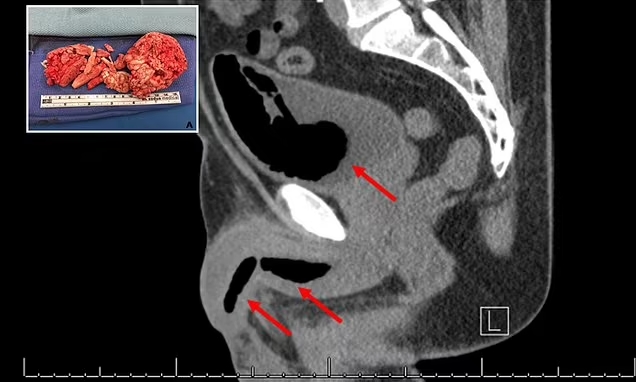 Dakota Bates addresses the PCSD 25 Board of Trustees. | Logan Ramsey, EastIdahoNews.com
Dakota Bates addresses the PCSD 25 Board of Trustees. | Logan Ramsey, EastIdahoNews.com
POCATELLO – Neighbors and other school district patrons applauded each other as they spoke against a rezoning effort that could close an elementary school.
Around 20 people spoke at a Pocatello/Chubbuck School District 25 public hearing, overwhelmingly in opposition to a proposal to shift the boundaries of the elementary, middle school and high schools of the district, with the option to close an elementary school. These proposals came from three subcommittees formed by the district to address its declining enrollment numbers, and were first presented at a board meeting in November.
The proposal, given by the Elementary Attendance and Enrollment Area Committee, was expanded by the committee following feedback from the public. In November, the committee’s proposal only included closing Washington Elementary, but it added two options: one to close Tendoy and another to not close any of the schools.
Before opening the hearing, district officials went over these three proposed plans for the elementary schools, all of which have modified proposed boundary lines. They also went over the proposals to shift the middle school and high school boundary lines as well.
View the district’s presentation below:
While not closing a school was presented as an option, the elementary committee doesn’t recommend that the board take that route.
“There still would need to be additional staff reductions to help meet state funding due to the decline in enrollment, possibility of some additional learner overloads, inefficient use of resources including ongoing maintenance costs,” explained AJ Watson, the director of elementary education, before the hearing.
Both Dakota and Kelsie Bates, who have two children attending Washington Elementary, started the public hearing. Like some of the other speakers, they expressed frustration with the process the district took to address enrollment declines.
Dakota, who represented the Washington Elementary Advocates, said, “we, above all else, feel that this decision is being rushed through a flawed process on an unnecessary and artificial timeline.”
“We are highly motivated to work on finding and enacting creative solutions, and have already started to do so,” Dakota said. “However, we cannot solve decades of neglect and deferred maintenance between the months of November and February.”
Stephanie Poppleton, a third grade teacher at Washington, spoke to the school’s importance in the lives of her students.
“Washington Elementary has been a cornerstone of this community for years. It’s not just a place where students come to learn academic content. It is a place where they build relationships that will last for a lifetime. When you close a school like Washington, you take away more than just bricks and mortar,” Poppleton said.
Kelsie Bates criticized the district for the level of investment it puts towards all of its 13 elementary schools, which she sees as insufficient.
“The most competition for learners is at the elementary level. And if you continue to ignore and continue to place what seems very little value at the elementary level, I don’t see your enrollment problem getting any better,” Kelsie said.
In an interview with EastIdahoNews.com, Jonathan Balls, director of business operations, said that the school board has requested more data from him on this, which is working on gathering.
“In general, if you look at a square footage, or a blueprint, or the number of activities from elementary school to a high school, obviously the high school is much greater and therefore needs more dollars there,” Balls said.
Dakota and Kelsie also raised issue with the scale of the Higland’s rebuild, pointing out that the state funding the project received could’ve been spent across the district.
“You have done this in spite of the fact that the community told you to try a different direction by voting down the bond in 2023,” Dakota said, referring to the May 2023 election which saw the district’s $45 million bond ask fail to net a supermajority of votes, with 56% in favor and 44% against.
“The impression is that Highland is being built at the expense of your elementary schools. This is not equitable. And once again, elementary facilities, teachers and staff get the short end of the stick,” Kelsie said.
In his speech, Dakota called on the district to change their approach to the Highland rebuild.
“You want a solution here? Scale back the over-the-top rebuilding Highland and be more equitable with the funds that were given by the state,” Dakota said.
Balls explained why this wasn’t an option the district was considering. While it hasn’t signed any contracts for the build, Balls expects the district will within around 45 days. If it was to reverse course, the Highland rebuild would have to start from scratch, throwing out the designs and plans they’ve already spent “a great deal of money” on.
“We’re well down that road,” Balls said.
One Washington Elementary parent, Ellie Ryan, pointed to her neighborhood’s strong support of the district, and questioned whether that support would continue.
“Closing Washington will erode this support after seeing the district’s lack of transparency and ability to solve problems and poor decision making. I doubt I will ever support another levy or bond,” Ryan said.
Courtney Fisher, spokesperson for the district, said that the district has shown “a commitment to transparency” throughout the rezoning process.
“It’s a complicated and nuanced issue,” Fisher said. “We’re just trying to do our best to provide that accurate data, the timeline for decision making and the rationale for those decisions being made.”


















 English (United States) ·
English (United States) ·